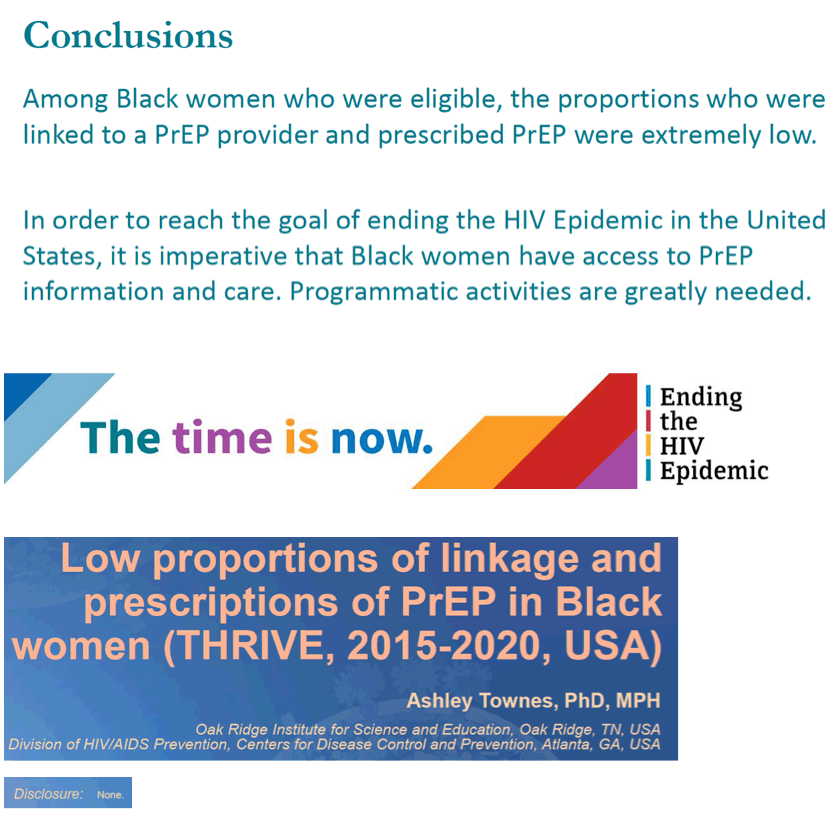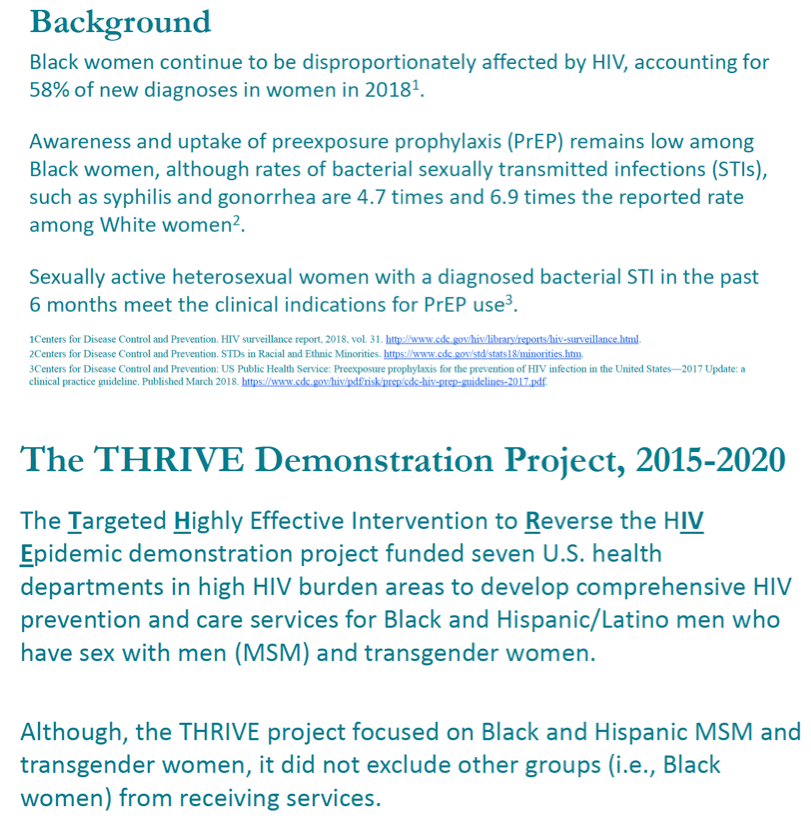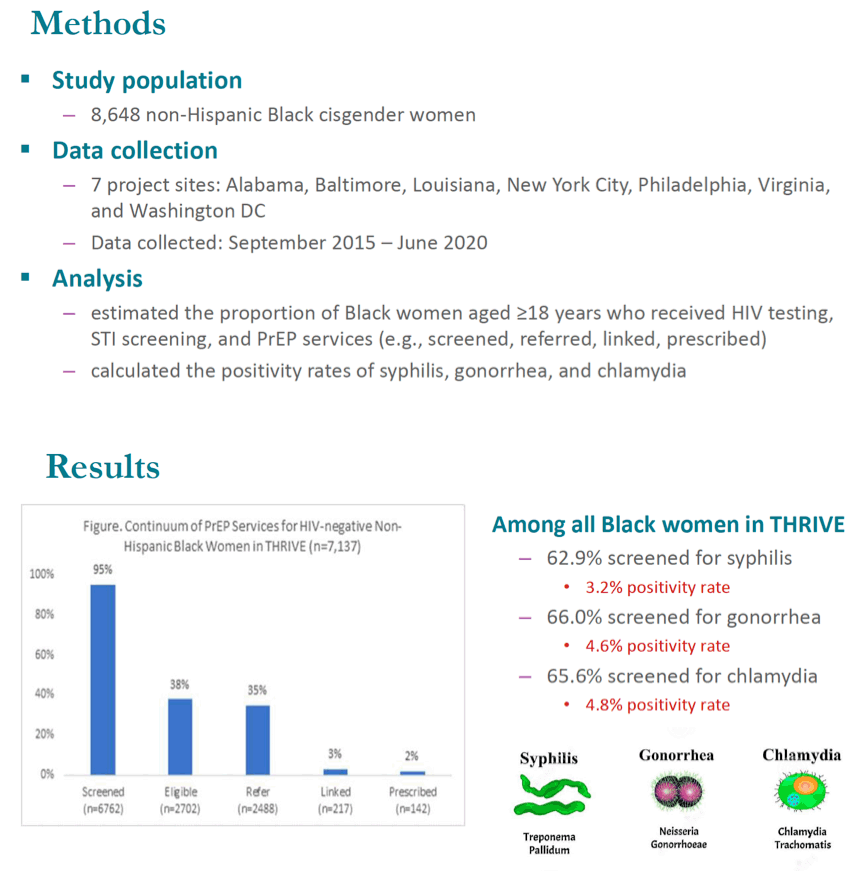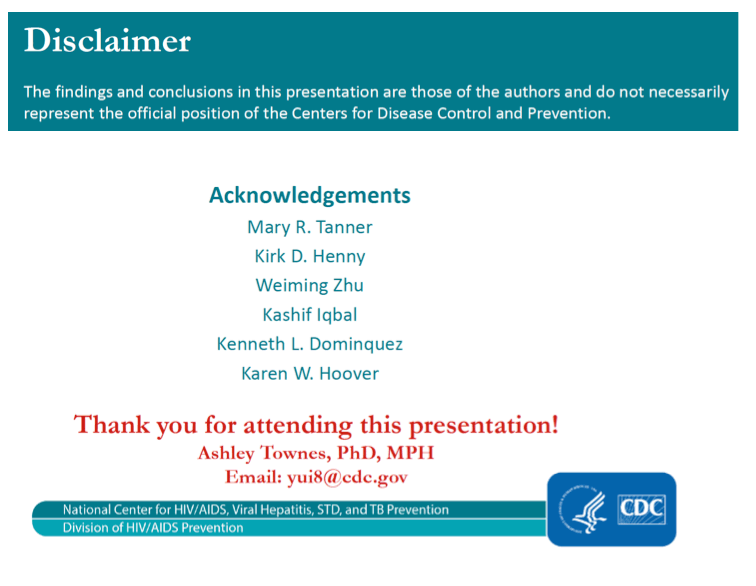 |
 |
 |
| |
LOW PROPORTIONS OF LINKAGE & PRESCRIPTIONS OF PrEP IN BLACK WOMEN (THRIVE, 2015-2020)
|
| |
| |
CROI 2021 March 6-10 Reported by Jules Levin
Ashley R . Townes1, Mary Tanner2, Kirk D. Henny2, Weiming Zhu2, Kashif Iqbal2, Kenneth L. Dominguez2, Karen W. Hoover2
1Oak Ridge Institute for Science and Education, Atlanta, GA, USA, 2Centers for Disease Control and Prevention, Atlanta, GA, USA
Background: To reach the goal of ending the HIV epidemic in the United States, it is important to understand HIV prevention efforts for Black women who continue to be disproportionately affected by HIV, accounting for 58% of new HIV diagnoses among women in 2018. Although perceived behavioral risk is low in Black women, rates of bacterial sexually transmitted infections (STIs), such as syphilis and gonorrhea remain 4.7 times and 6.9 times the reported rate among White women. Those two bacterial STIs are indications for pre-exposure prophylaxis (PrEP), yet PrEP awareness and uptake remains low among Black women. The THRIVE demonstration project supported 7 U.S. health departments to provide comprehensive HIV prevention and care services to men who have sex with men of color but did not exclude other clients from receiving services.
Methods: We analyzed preliminary data collected from 8,648 non-Hispanic Black women enrolled in the THRIVE demonstration project. Data were reported by 7 project sites located in Alabama, Baltimore, Louisiana, New York City, Philadelphia, Virginia, and Washington DC from September 2015 through June 2020. We estimated the proportion of Black women aged ≥18 years who received HIV testing, STI screening, and PrEP services (e.g., screened, referred and linked to a PrEP provider, and prescribed PrEP) and calculated the positivity rates of syphilis, gonorrhea, and chlamydia.
Results: Among the 7,137 Black women in the THRIVE demonstration project who were HIV negative, 2,702 (38%) were eligible for PrEP and 2,488 (35%) were referred to a PrEP provider, yet only 217 (3%) were linked with a PrEP provider and 142 (2%) were prescribed PrEP medication (see Figure 1). Among all Black women in the sample, 69.8% were screened for bacterial STIs, including 62.9% for syphilis, 66.0% for gonorrhea, and 65.6% for chlamydia. The positivity of STI tests were 3.2% for syphilis, 4.6% for gonorrhea, and 4.8% for chlamydia.
Conclusion: Among Black women who were eligible, the proportions who were linked to a PrEP provider and prescribed PrEP were extremely low. In order to reach the goal of ending the HIV Epidemic in the United States, it is imperative that Black women have access to PrEP information and care. Programmatic activities focused on specifically meeting the HIV prevention needs of Black women are greatly needed.




|
| |
|
 |
 |
|
|